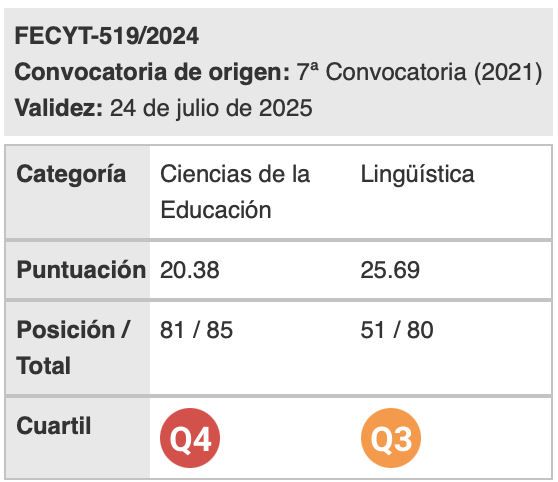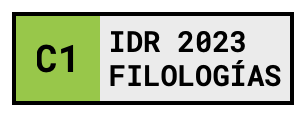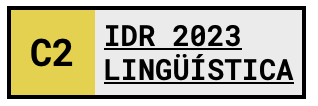Grammatical means of textual cohesion in appellate court decisions
Palabras clave:
textual cohesion, reference, substitution, ellipsis, legal EnglishResumen
The submitted paper deals with analysis of grammatical means of textual cohesion in English in a specific genre of legal register, i.e. in appellate court decisions. The theoretical framework of analysis is the theory of textual cohesion introduced by Halliday and Hasan in their work Cohesion in English (1976), which considers only intersentence cohesive ties to be textually cohesive and which distinguishes four categories of grammatical cohesion: reference, substitution, ellipsis and conjunction. In the analysed texts, all the instances of these four categories of grammatical cohesion are identified and statistically evaluated. The aim of the analysis is twofold. The first goal of research is to find out what kinds of cohesive devices appear with the highest frequency. Another focus of analysis is to find out whether the grammatical means of textual cohesion under analysis contribute to the stylistic qualities of the analysed texts and make them unambiguous and clear enough for interpretation. The findings of the analysis as well as their subsequent comparison with other registers indicate that the most frequent grammatical means of textual cohesion, namely demonstrative reference and additive conjunction, significantly contribute to precision, formality and logical organization of the analysed genre of legal English.
DOI: 10.20420/rlfe.2015.0010
Descargas
Citas
Bajzíková, E. (1995). Slovenský jazyk. Textová syntax. Bratislava: Stimul.
Bhatia, V. K. et al. (2004). Legal discourse. Opportunities and threats for corpus linguistics. In T. Upton et al. (Eds.). Discourse in the professions. Perspectives from corpus linguistics (203-234). Amsterdam: John Benjamins Publishing Company.
Bolinger, D. (1975). Aspects of language. New York: Harcourt Brace Jovanovich.
Buitkiene, J. (2005). Variability of cohesive devices across registers. Studies about languages, 7, 59-68.
Danet, B. Legal discourse. (1985). In T.A. van Dijk (Ed.). Handbook of discourse analysis, Vol. 1, Disciplines of discourse (273 – 389). London: Academic Press Inc.
Engberg, J. & Heller, D. (2008). Vagueness and indeterminacy in law. In K. Vijay et al. (eds.) Legal discourse across cultures and systems (145-168). Hong Kong: Hong Kong University Press.
Gutwinski, W. (1976). Cohesion in literary texts. A study of some grammatical and lexical features of English discourse. The Hague: Mouton, Janua Linguarum Series Minor.
Gibbons, J. (2007). The language and the law. In A. Davies & C. Elder (eds.) The handbook of applied linguistics (258-303). Malden, MASS: Wiley – Blackwell Publishing.
Halliday, M.A.K. & Hasan, R. (1976). Cohesion in English. London : Longman.
Hinkel, E. (2001) . Matters of cohesion in L2 academic texts. Applied Language Learning 2, 111-132.
Kurzon, D. (1983). Research in text connexity and text coherence: A survey. In H. Buske (ed.) Papiere Zur Textlinguistik, Vol. 2 (369 – 378)
Laster, K. (2001). Language and law. In K. Laster Law as culture, 2nd ed. (243 – 267). Annandale, VA: The Federation Press.
Leech, G. et al. (2007). Style in fiction. A linguistic introduction to English fictional prose (2nd ed.). London: Longman.
Maley, Y. (1987). The language of legislation. Langage in society, 16 (1), 25 – 48.
Mellinkoff, D. (1963). Language of the law. Boston: Little, Brown and Co.
Scott, M. & Thompson, G. (2001). Patterns of text. In honour of Michael Hoey. Amsterdam: John Benjamins Publishing Company.
Štekauer, P. (1995). An encyclopaedia of english linguistics. Prešov: Slovacontact.
Taboada, M. T. (2004). Building coherence and cohesion. Amsterdam: John Benjamins Publishing Company.
Tanskannen, S. K. (2006). Collaborating towards coherence. Amsterdam: John Benjamins Publishing Company.
Tomášek, T. (1998). Překlad v právní praxi. Praha: Linde.
Trosborg, A. (2000). Analyzing professional genres. Amsterdam: John Benjamins Publishing Company.
Descargas
Publicado
Cómo citar
Número
Sección
Licencia
Aquellos autores/as que tengan publicaciones con esta revista, aceptan los términos siguientes:
- Los autores/as conservarán sus derechos de autor y garantizarán a la revista el derecho de primera publicación de su obra, el cuál estará simultáneamente sujeto a la Licencia de reconocimiento de Creative Commons que permite a terceros compartir la obra siempre que se indique su autor y su primera publicación esta revista.
- Los autores/as podrán adoptar otros acuerdos de licencia no exclusiva de distribución de la versión de la obra publicada (p. ej.: depositarla en un archivo telemático institucional o publicarla en un volumen monográfico) siempre que se indique la publicación inicial en esta revista.
- Se permite y recomienda a los autores/as difundir su obra a través de Internet (p. ej.: en archivos telemáticos institucionales o en su página web) antes y durante el proceso de envío, lo cual puede producir intercambios interesantes y aumentar las citas de la obra publicada. (Véase El efecto del acceso abierto).

Revista de Lenguas para fines específicos is licensed under a Creative Commons Reconocimiento-NoComercial-SinObraDerivada 4.0 Internacional License.






















